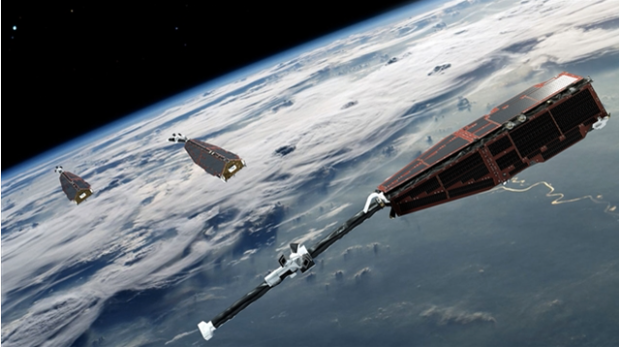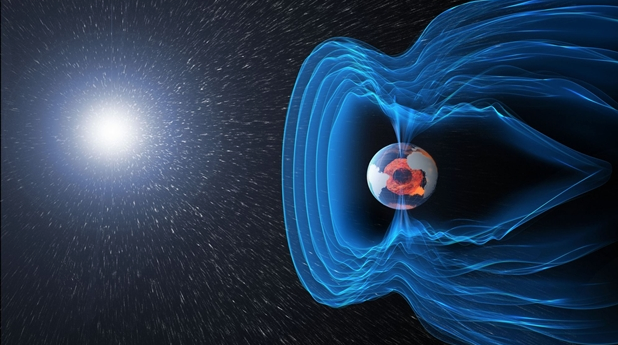[SatNews] The data acquired from different locations can be used to distinguish between the changes in the magnetic field caused by the Sun’s activity...
The European Space Agency's trio of Swarm satellites are being steered into their respective orbits in preparation for their mission to produce the best-ever survey of Earth's magnetic field.
Since the Swarm constellation was launched last November, engineers have been putting the satellites through their paces to make sure that the craft and instruments are working correctly before they start providing data to further our understanding of the complex and constantly changing magnetic field. Essential to life, the magnetic field protects us from cosmic radiation and charged particles from the Sun that constantly bombard Earth.

How the three satellites in the Swarm mission will look orbiting the Earth. Image credit: ESA
The intensity of solar activity is currently lower than anticipated. This low solar activity means the satellites experience lower atmospheric drag, so the original plan of where to place the satellites at the beginning of science operations has been reviewed recently by the scientific community and experts in ESA.
Launched together, the three identical Swarm satellites were released into adjacent orbits at an altitude of 490 km. Tasked with measuring and untangling the different magnetic signals that stem from Earth’s core, mantle, crust, oceans, ionosphere and magnetosphere, the satellites may be identical, but to optimise sampling in space and time their orbits are different. The data acquired from different locations can be used to distinguish between the changes in the magnetic field caused by the Sun’s activity and those signals that originate from inside Earth.
Two satellites are now being lowered to an altitude of about 462 km and an inclination of 87.35°. They will orbit almost side by side, about 150 km apart as they pass over the equator. Over the life of the mission they will both descend to about 300 km. The third satellite is being placed in a higher orbit of 510 km and at a different inclination of 87.75°, slightly closer to the pole.

Earth's protective shield. Image credit: ESA/ATG medialab.
Roger Haagmans, Swarm’s Mission Scientist, explained, "The constellation originally planned meant a continuous drift between the upper and lower satellites. Since we can now slow the relative drift thanks to the current state of the Sun and its even lower activity expected in the next years, we can now obtain more regular observations of the changing magnetic field over time."
The mission's System Engineer, Ralf Bock, said, "We are taking the satellites to their new heights through careful thrust and aim to achieve the constellation for science operations around mid-April."
Each satellite carries a novel instrument to measure the velocity, direction and temperature of incoming ions. This information will be used to calculate the electric field near the satellite, an important counterpart to the magnetic field for studying processes in the upper atmosphere. Swarm is the first mission to make these global, multipoint measurements.
The animation below shows the first data from the electric field instrument from the horizontal and vertical imagers. Johnathan Burchill from the University of Calgary explains, "This is a time-lapse movie of some of the first ion images observed by Swarm. Spanning more than an orbit, the images in this movie demonstrate the capability of the instrument to operate under a wide range of plasma conditions."
Jenny Winder of SEN receives credit for this article that can be found at.

